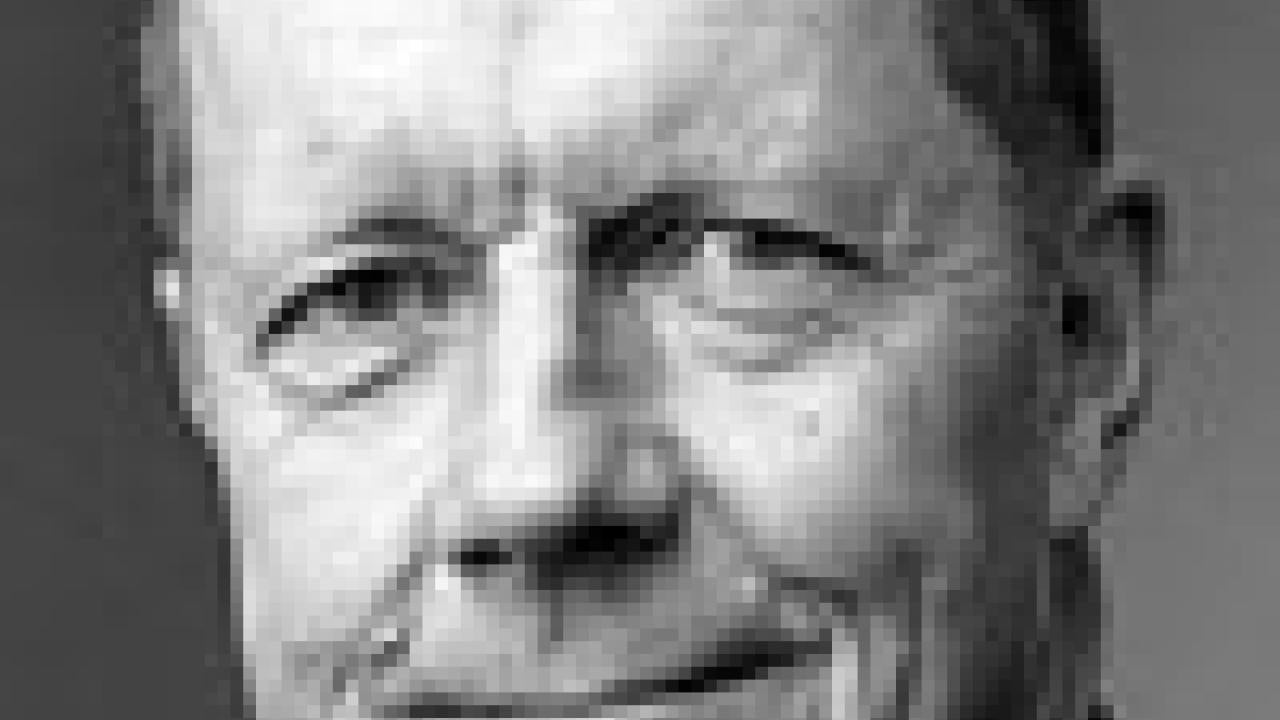Joe Mauk Smith, a professor emeritus of chemical engineering at the University of California, Davis, died at his home in Davis on June 7. He was 93.
A founder of the university’s College of Engineering, Smith was considered by his colleagues to be one of the most influential chemical engineering educators in the history of the profession. His textbook, “Introduction to Chemical Engineering Thermodynamics,” has been in print for 60 years.
Renowned for his research in reaction kinetics and reactor design, Smith published over 350 scientific papers and received nearly every honor offered by his profession. In 1975 he was elected to the National Academy of Engineering, cited both for his leadership in chemical reaction kinetics and thermodynamics as well as for teaching these subjects. Over the course of his career, he received four Fulbright fellowships and a Guggenheim fellowship. In 1970, he was named UC Davis Faculty Research Lecturer, the highest honor UC Davis faculty members have to bestow on their peers.
“Joe Smith brought credibility to the early days of the College of Engineering, establishing a standard of excellence that has guided us for nearly 50 years,” said Bruce White, dean of the college. “He was one of our first faculty members to be inducted into the National Academy of Engineering and, with great generosity to the college, established his department's first endowed chair. His contributions will not be forgotten.”
Smith was born in Sterling, Colo., on February 14, 1916, and grew up in Long Beach, Calif. Admitted to the California Institute of Technology in Pasadena during the Great Depression, he was supported through college by his parents, who moved to Pasadena at the time so that he could live at home and avoid paying for room and board. He graduated in 1937 with a degree in applied chemistry, the name given to many chemical engineering programs at the time.
After graduation, Smith spent four years in the oil industry, working for Texaco at its offices in the Chrysler Building in New York City, and then moved back to California, where he worked for Chevron, in El Segundo and Santa Fe Springs. While at Chevron, he decided that the opportunities for advanced studies in chemical engineering were limited, said Alan Jackman, professor emeritus at UC Davis’ Department of Chemical Engineering and Materials Science. “He told me that he realized then that career advancement would require moving into administration,” Jackman said.
So in 1941, Smith resumed his studies, receiving a Doctor of Science degree from the Massachusetts Institute of Technology two years later. He immediately started his academic career, teaching for one year at the University of Maryland. It was there that he met and married his wife, Essie McCutcheon.
From 1945 to 1957, Smith taught at Purdue University in Indiana. He then served as dean of technology at the University of New Hampshire for a year before moving to Northwestern University in Illinois as chair of the Department of Chemical Engineering.
In 1961, he was recruited to UC Davis to lay the groundwork for the anticipated creation of the College of Engineering the following year. Just three years later, he founded the Department of Chemical Engineering and served as its department chair until 1972. After mandatory retirement in 1986, he remained active in the department.
Smith began his academic career during World War II, a time of great change in chemical engineering when the need for a definitive textbook was high. He started writing his book “Introduction to Chemical Engineering Thermodynamics” shortly after arriving at Purdue in 1945. Drafts of the text were used there until 1949, when the first bound edition was published. Hendrick Van Ness joined Smith as co-author of the second edition, published in 1959. Later, M.M. Abbott became a third co-author. Now in its sixth edition, it is the best-selling text in the history of the discipline.
Smith was still at Purdue when he wrote a second textbook, “Chemical Engineering Kinetics,” which also became the seminal text in its field, significantly changing the way chemical reaction engineering was taught.
“There has not been, and may never be, a text in any field of engineering that has been as influential as Joe's thermodynamics book,” said Bob Powell, chair of UC Davis’ Department of Chemical Engineering and Materials Science. “By virtue of his textbooks, Joe was arguably the most influential educator in the history of chemical engineering. He certainly set the standard for the department and for the college."
Smith loved teaching, and students appreciated his individualized approach to education, Jackman said. “Joe’s teaching style was greatly influenced by William Lacey, one of his professors at Caltech,” he said. “And now his own work and teaching have profoundly influenced several generations of chemical engineers. I feel fortunate to be among those who benefited from that influence.”
In 1996, Smith and his wife endowed the Joe and Essie Smith Chair in Chemical Engineering, a position currently held by Associate Professor of Chemical Engineering and Materials Science Roland Faller.
Smith is survived by his wife of 65 years, Essie, daughters Rebecca Conrad of Philadelphia and Marsha Torbert of Davis, six grandchildren and one great-grandchild.
Media Resources
Liese Greensfelder, Research news (emphasis: biological and physical sciences, and engineering), (530) 752-6101, lgreensfelder@ucdavis.edu
Jo Shroyer, College of Engineering, (530) 754-9090, jashroyer@ucdavis.edu
